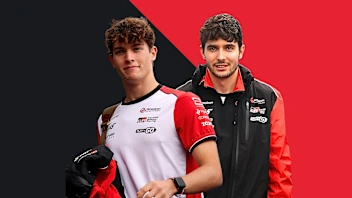TECH TUESDAY: The ‘plank’ has been in F1 since 1994 – so why did Mercedes and Ferrari get caught out in Austin?

/Tech%20Tues%202023%20Austin.webp)
The disqualification of Lewis Hamilton and Charles Leclerc from their respective second and sixth places in the United States Grand Prix has brought the underbody plank into the frontline of F1 news for the first time since Michael Schumacher’s Benetton was excluded from victory at Spa 29 years ago. What is the plank for and why has it suddenly come back into the news after so long? To fully understand that requires the telling of some F1 history.
The compulsory fitment of the plank to the centre of the underfloor was part of a raft of reactions to the fatal accidents at Imola 1994 of Roland Ratzenberger and Ayrton Senna. A contributory cause of the Senna accident was believed to be the underbody airflow stalling as the car ran low on under-pressure tyres following several slow laps behind an under-powered Safety Car.
Next Up
Related Articles
 WATCH: F1 Animated returns for a look back at 2025
WATCH: F1 Animated returns for a look back at 2025 End Of Year Reports 2025Haas’ best and worst moments from 2025
End Of Year Reports 2025Haas’ best and worst moments from 2025 Mekies on ‘very difficult’ decision to demote Tsunoda
Mekies on ‘very difficult’ decision to demote Tsunoda.webp) End Of Year Reports 2025Aston Martin’s best and worst moments from 2025
End Of Year Reports 2025Aston Martin’s best and worst moments from 2025 Albon names moment he's most proud of from 2025
Albon names moment he's most proud of from 2025 ExclusiveVesti on life as Mercedes reserve and his F1 plan
ExclusiveVesti on life as Mercedes reserve and his F1 plan
